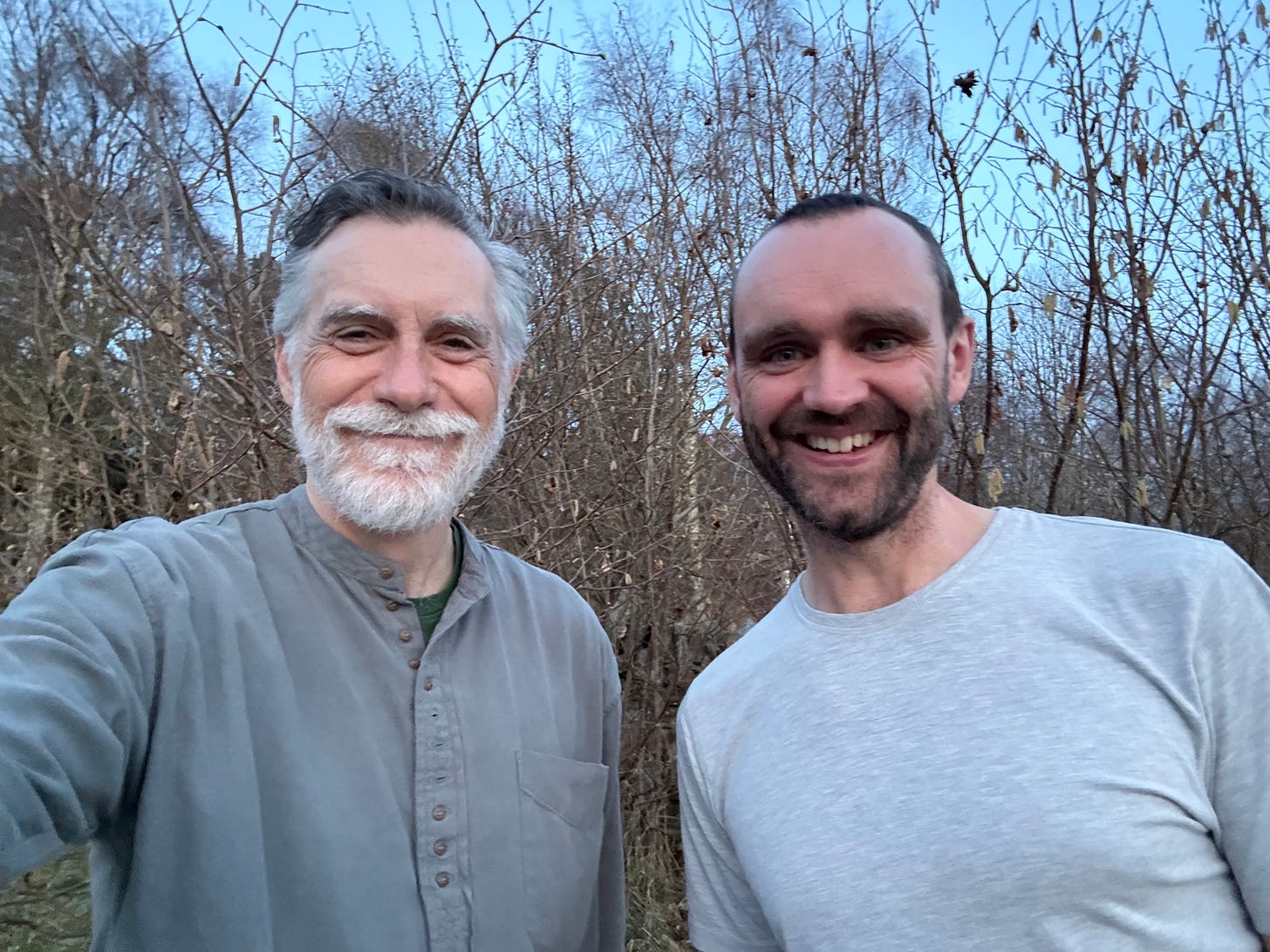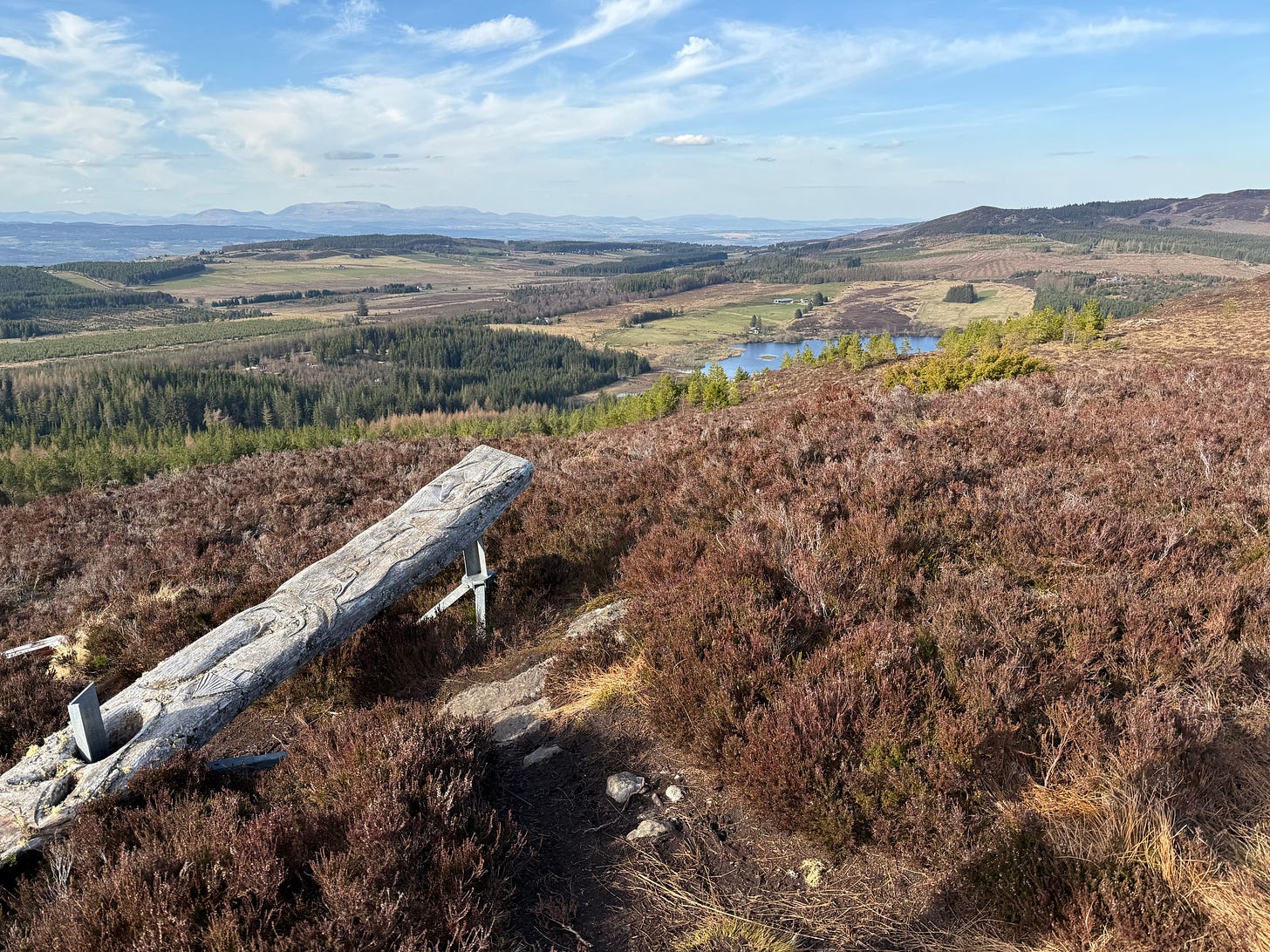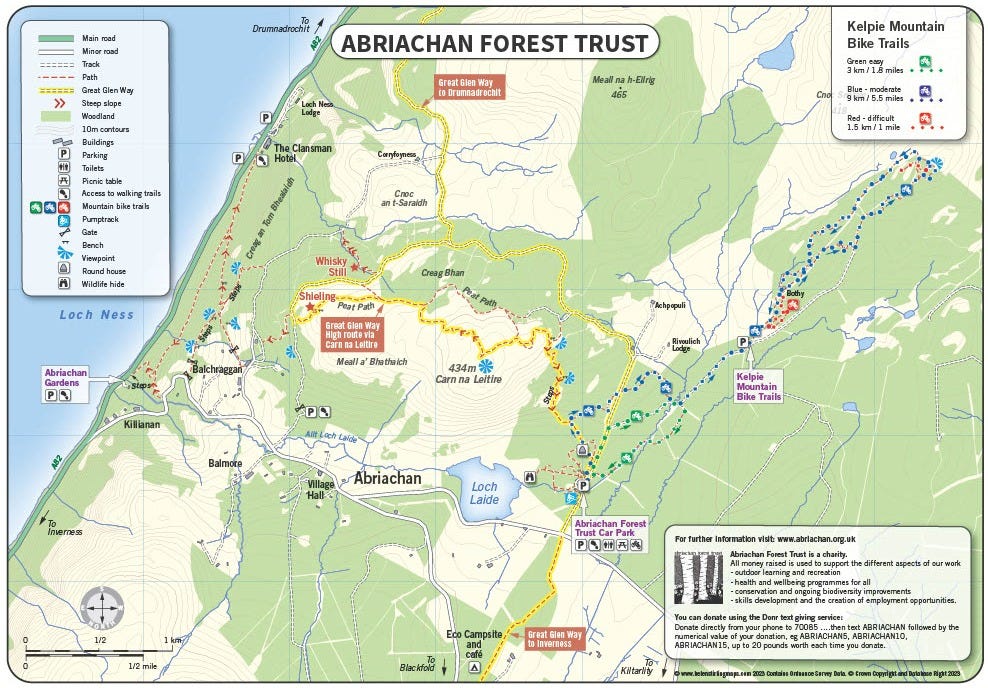If you want to get to the Abriachan Forest Trust’s lands, you’ll need to veer off the main Loch Ness road sharply, and head up the steep incline to the western plateau of the Great Glen. The lands I was to visit - some of which feel like walking through a fairy tale - are managed very differently from Bunloit (the estate I had explored the day before). You see, while Abriachan, too, is very much focused on nature restoration, it is, first and foremost, about community.
When I arrived at the parking lot, so did environmental engineer Sam Hesling, a brightly beaming family man in his early forties. From his lean frame you could tell that he’s a passionate Scottish Highlands hill runner. His personal story very much ties into the forest trust’s work. You see, his grandmother was Katherine Stewart (1914 - 2013), the well-known author, crofter, teacher and postmistress who, in 1950, moved to a croft at Abriachan with her husband and daughter Hilda (Sam’s mother). In time, she would become a prolific writer, and the Abriachan Forest Trust’s first patron.
👉 Go here to learn more about her fascinating life.
It is said that, without Sam’s grandmother, the trust might have never happened. The story goes that she heard the Forest Enterprise wanted to sell those lands. Then one thing led to another and the community of Abriachan, in 1998, was offered the opportunity to purchase nearly 540 hectares of forest lands and open hills. It was a chance not to be missed. It gave the local community the chance, as stewards of the land, to think and act in the long-term best interests of people and nature.
Since then, the Abriachan Forest Trust has set aside about one third of the lands for nature restoration, with hiking paths, mountain bike trails and a thriving forest school - while the other two thirds are managed for timber to generate revenue needed to support the community, create new offerings, maintain operations, and ensure the charity’s continued viability for future generations. Sam and his family came to Abriachan in 2012 and I’ve no doubt that, with his family history and connection to the land, it was inevitable that he would become a trustee.
We began our walk at the children’s playground and forest school, but frankly, I had already been taken in while driving toward our meeting point. Colorfully painted wooden birds led the way, already creating a sense of warmth and joyful playfulness. On our walk later-on we would come across wooden sculptures, carved benches and even the reconstruction of an iron-age thatched round hut (perfect for storytelling times!).
👉 Here’s an excellent account (with pictures) of a hike.
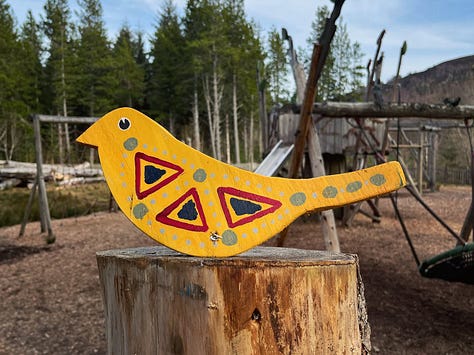
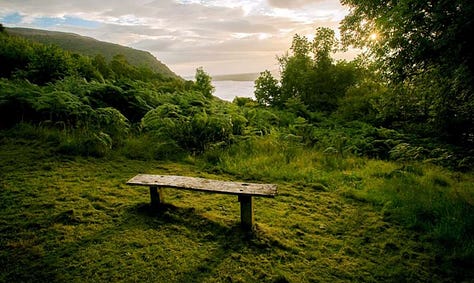
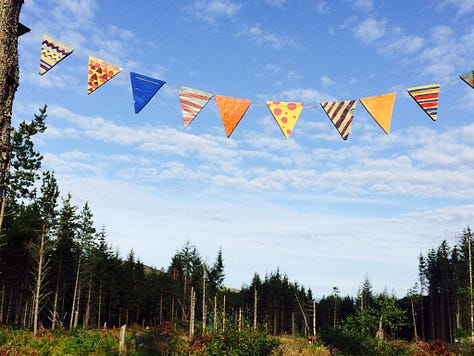
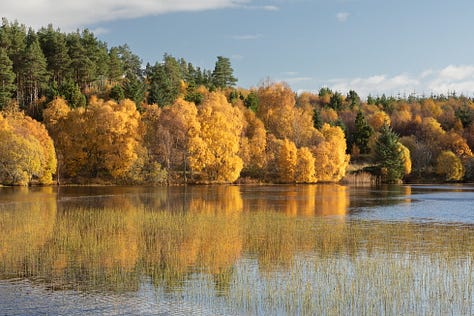
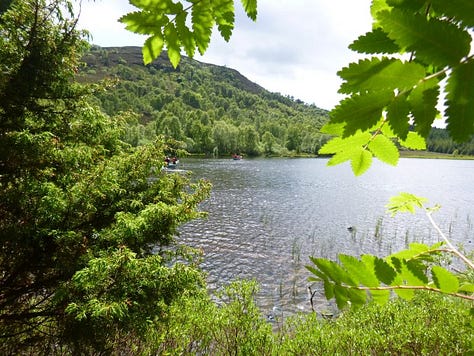
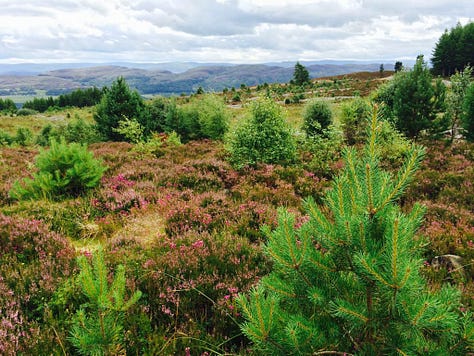
In the more than twenty-five years of the trust’s existence, biodiversity has dramatically improved. They’ve created more native woodlands (with over 125’000 native trees planted and a great deal of natural regeneration thanks to the controlling of deer numbers) and wildlife clearly loves it here. But again, what was most beautiful for me to see was, for once, not nature (while that’s always heartening, of course), but the very direct impact on people.
With parents all playing their parts, with generation after generation of children attending the forest school, a deep connection with the trust’s lands, with its flora and fauna, runs through the veins of everyone. They community is small, really, with just about one hundred and thirty people, but the impact is, any which way you look at it, massive. I’ve read that nearly forty young people today are working in land-based jobs. Clearly, the roots grown early in life, thanks to the Abriachan Forest Trust, are deep and strong - and these are the next generations that will continue to act as impassioned stewards of the land.


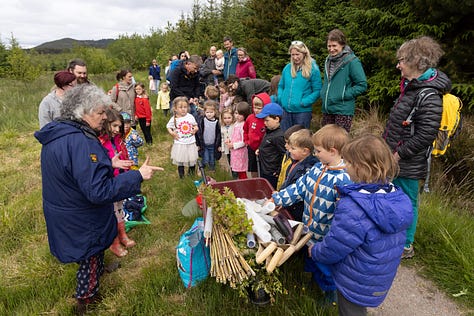
When you visit Abriachan woods, you’ll feel it, you’ll breathe it in, that sense of community, that sense of care. What happens here looks, to me, like a very good balance that benefits both nature and people. In this article, the Scottish Rewilding Alliance reported that the trust’s work has led to £3.7 million invested in the local economy. There are jobs created and, overall, the trust’s financial security really is the key that allows for long-term thinking and engagement.
This is their land and they’re making the most of it in holistic ways.
As Sam and I talked about native woodland regeneration, deer controlling and tree planting, we walked on wonderfully maintained paths through the woods, up and up the hill/mountain. Up there at the top of Carn na Leitire, in the brightest sun and bluest skies, Sam showed me where their conifer plantations lay and highlighted the trust’s borders in every direction.
I thought to myself, how good it must feel to be able to look in every direction and know that this land belongs to a community you are a part of, a community that treats the land with care. Frankly, I think their balanced way of stewardship should serve as a shining example for every traditionally-run estate.
In the distance, another crag rose (the Meall na h-Eilrig, I believe), with a picturesque lochen nestled into the hills to its right. Since we had talked about land connectivity, the importance of nature-positive neighbors and the creation of wildlife corridors, Sam told me that the land over yonder had come up for sale - but the price had been too steep for the community. Well, opportunities come and go and new ones will come around again. For me it’s just great to see that they are open to and very much interested in such opportunities.
As we began our descent, in a wide loop and past manmade fire ponds, I wondered about the mechanics of such a community trust. I figured that it couldn’t always be easy for everyone to agree on this or that. Sam smiled and said that, it actually often was. The three reasons: 1) they have clear guidelines; 2) they’re all equally invested; and 3) and maybe most importantly, they talk to each other!
Sam gave the example of possibly introducing beavers to their lands. The topic of beavers is often a bit contentious (as the current challenges with Trees for Life’s beaver plans for Glen Affric show), but the community trust simply reached out to everyone to begin with and then, by the time a decision had to be made about beaver yes or no, everyone was enthusiastically on board. This, of course, after beaver specialist Dr. Roisin Campbell-Palmer had been at Abriachan twice and confirmed that beavers would love it there.
Will beavers be allowed to make Abriachan their home? I sure hope so. Frankly, these lands offer just about everything to make a good home for people, for flora and fauna - and it is, clearly, testament to the unceasing, deeply caring efforts of the whole of this community. They truly are a beacon of hope and an example to be emulated.
Cheers,
PS: I asked Sam about other such communities and he told me that they are one of over 100 members of an organization called Community Land Scotland that brings landowning communities together to network, learn from each other, increase this type of landownership and give such communities a strong voice. So you see - this type of community landownership seems to be spreading - good!
If you enjoy the Rewilder Weekly …
… consider supporting my work. Your paid subscription will help generate the funds needed to realize a unique rewilding book I’m working on. And, of course, that paid subscription also ensures that the Rewilder Weekly will always keep going for those who cannot afford to pay. A thousand thanks!







